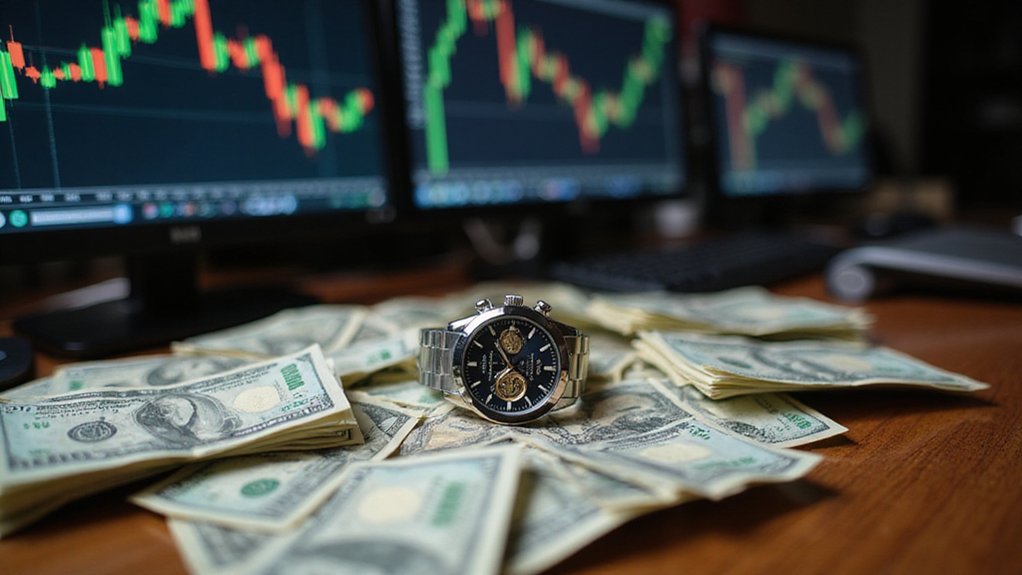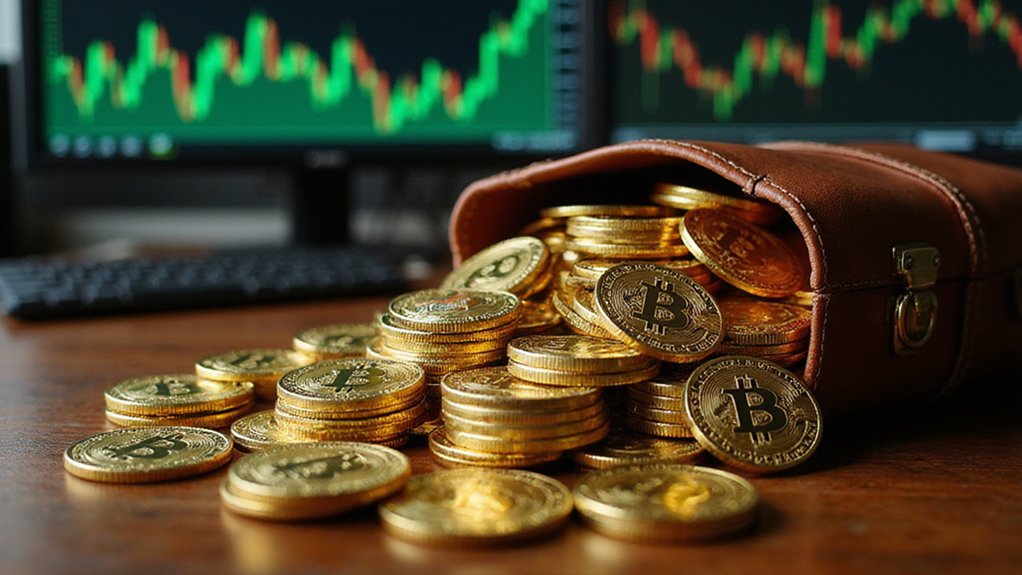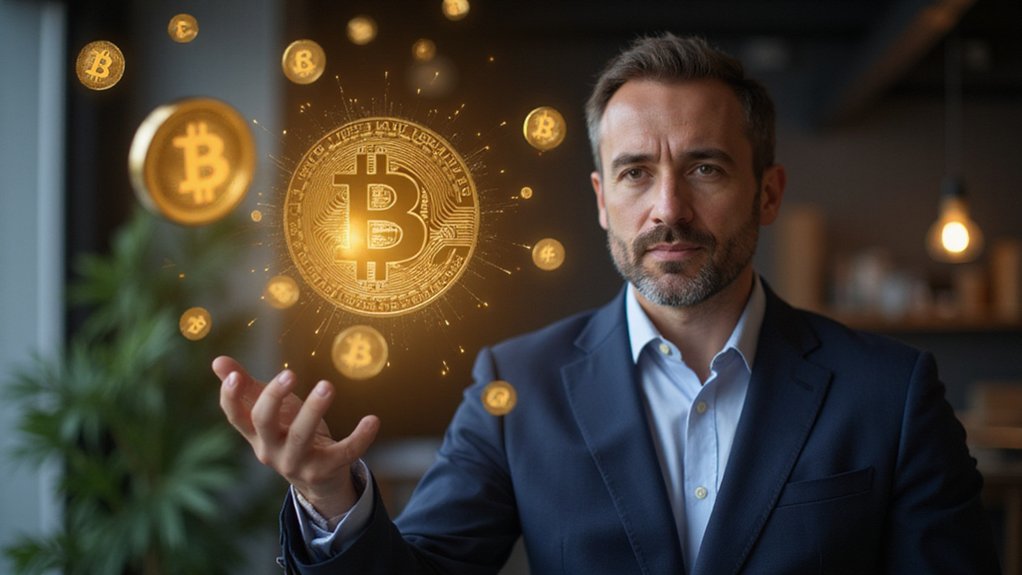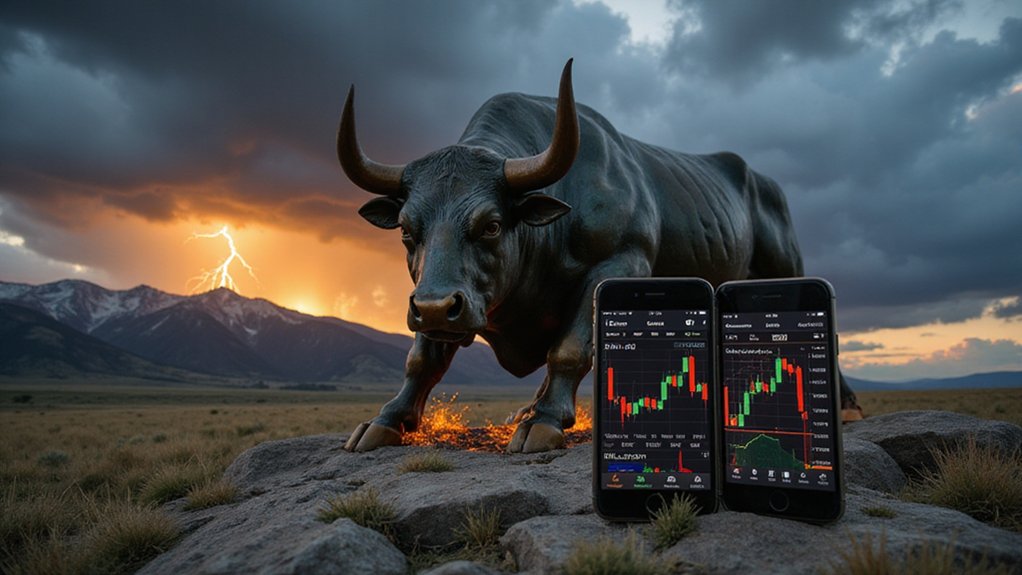While most retail investors carefully deliberate over stock purchases for hours or even days, high-frequency traders have already executed thousands of transactions in the time it takes to blink—a stark reminder that speed, not contemplation, increasingly drives modern market dynamics.
The mathematics of volume-based profit accumulation reveals why sophisticated algorithms dominate modern markets. High-frequency trading strategies capitalize on minuscule price movements—often mere pennies per share—but execute these trades across massive volumes within milliseconds. A seemingly insignificant one-cent profit on a million-share transaction generates $10,000 (excluding fees, naturally), demonstrating how marginal gains compound exponentially when multiplied by algorithmic efficiency and lightning-fast execution speeds.
Algorithms transform pennies into thousands through lightning-fast execution across massive volumes, proving that speed trumps human contemplation in modern markets.
Scalping tactics mirror this volume-dependent approach, though human traders typically hold positions for seconds to minutes rather than microseconds. These practitioners rely heavily on technical indicators—moving averages, Bollinger Bands, and RSI readings—to identify fleeting opportunities within highly liquid markets. The strategy demands extraordinary discipline; tight stop-losses become essential when profit margins remain razor-thin and leverage amplifies both potential gains and devastating losses.
Trend-following strategies present an intriguing paradox: despite success rates hovering around 20%, consistent profitability emerges through systematic adherence to momentum-based signals and moving average crossovers. The counterintuitive nature of profiting while being wrong 80% of the time underscores the importance of risk management and position sizing—concepts that approximately 62% of traders actively employ to preserve capital during inevitable drawdowns. Research across major indexes reveals that random strategies often exhibit lower fluctuations and risk compared to these standard trading approaches.
Breakout trading offers marginally better odds at roughly 30% success rates, targeting price levels where assets breach established resistance or support zones. Volume confirmation becomes vital; false breakouts can devastate unprepared traders who fail to implement protective stop-losses near entry points.
Perhaps most sobering is the statistical reality that approximately 40% of traders abandon their ambitions within the first month—a demonstration of both the psychological demands and financial risks inherent in high-stakes trading environments. The institutional dominance is evident as HFT now represents approximately 50% of trading volume in US equity markets, making competition increasingly challenging for individual traders. Modern trading platforms increasingly integrate blockchain technology for settlement processes, with many newer systems adopting Proof of Stake mechanisms due to their superior energy efficiency and faster transaction processing capabilities.
The 88% of day traders who utilize stop-loss orders demonstrate that successful practitioners prioritize capital preservation over aggressive profit-seeking, recognizing that surviving market volatility often matters more than capturing every potential opportunity.







